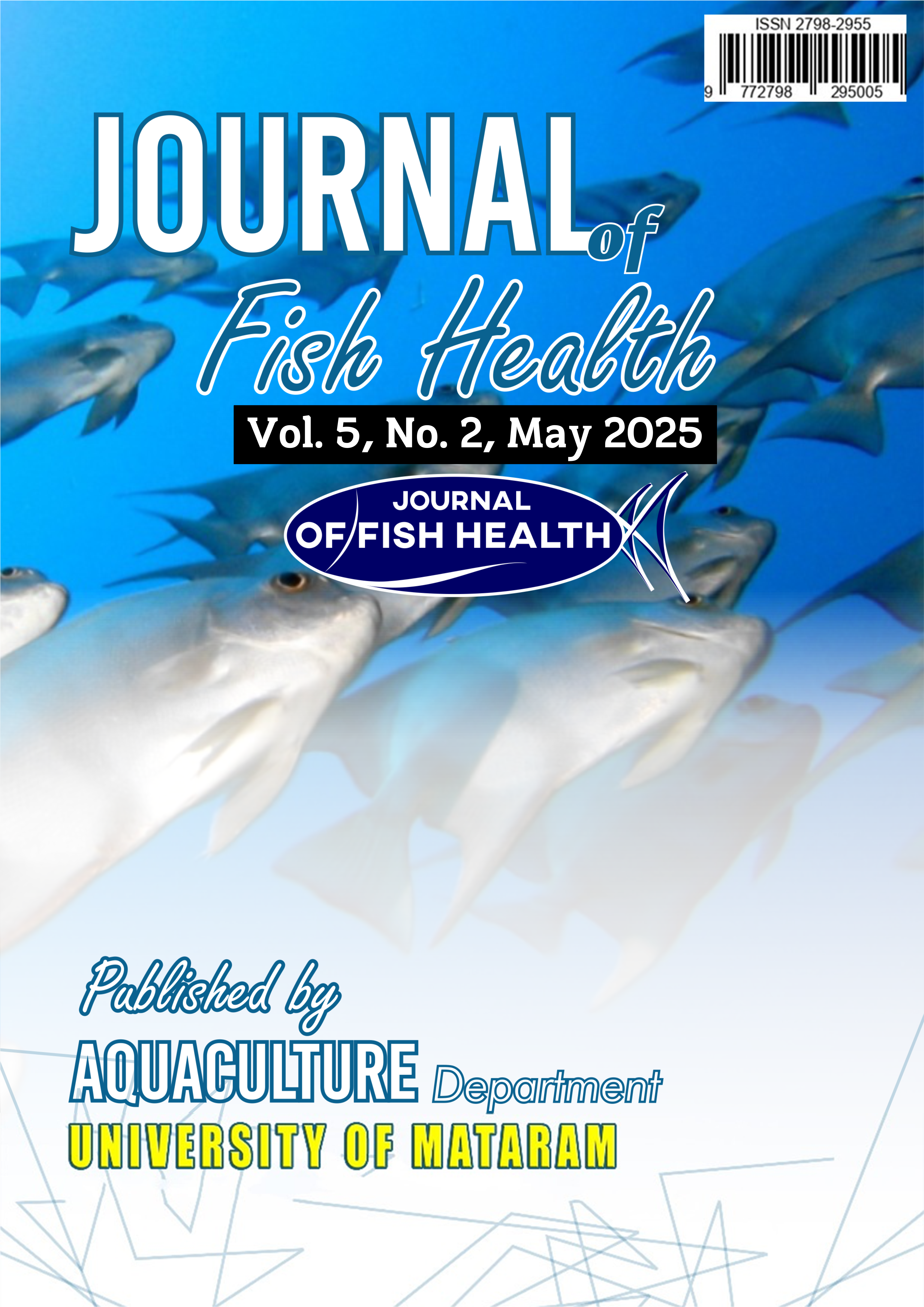Silver Barb (Barbonymus gonionotus) Broodstock Maintenance Techniques at the Technical Implementation Unit of the Fish Seed Service Central Aikmel, East Lombok
DOI:
https://doi.org/10.29303/jfh.v5i2.6366Keywords:
Broodstock, Maintenance, Growth, Silver Barb, Water QualityAbstract
The development of the marine and fisheries sector is a mainstay sector to improve the Indonesian economy (Blue Economy), where aquaculture is a fairly productive and growing sub-sector. Not only sea waters, Indonesia also has very good freshwater potential for development based on aquaculture. Silver barb (Barbonymus gonionotus) is a native freshwater fish from Indonesia and is one of the economical consumption fish that is affordable for the community. The data collection techniques used are primary data and secondary data. This technique is carried out by Primary data, namely data obtained in the field from observations during the implementation of research. Primary data can be in the form of direct observation or observation, namely directly observing the activities carried out such as observing fish growth by looking at the increase in length and weight. Secondary data, namely data obtained from various books, journals, statistical data, articles, and others. Maintenance of silver barb broodstock is carried out by preparing the pond first starting from drying, liming, fertilizing, filling with water, then maintaining the broodstock. Maintenance of silver barb broodstock for 28 days resulted in SR (Survival Rate) values for males of 100% and females of 99%, then FCR (feed conversion rate) for males of 1.64 and females of 1.72. Water quality measurements were carried out 5 times a week and the range obtained was temperature 28-32 ⁰C, pH 8–8.6 and DO (Dissolved oxygen) 8–9.7 mg/l.
Downloads
Published
Issue
Section
License
1. The copyright of this journal belongs to the Editorial Board, based on the author's consent, while the moral rights of the publication belong to the author(s).
2. The formal legal aspect of journal accessibility refers to the same Creative Common Attribution + Noncommercial + ShareAlike (CC BY-NC-SA), implying that publication can be used for non-commercial purposes in its original form.
3. Every publication (printed/electronic) is open access for educational, research and library purposes. In addition to the objectives stated above, the editorial board is not responsible for copyright infringement















